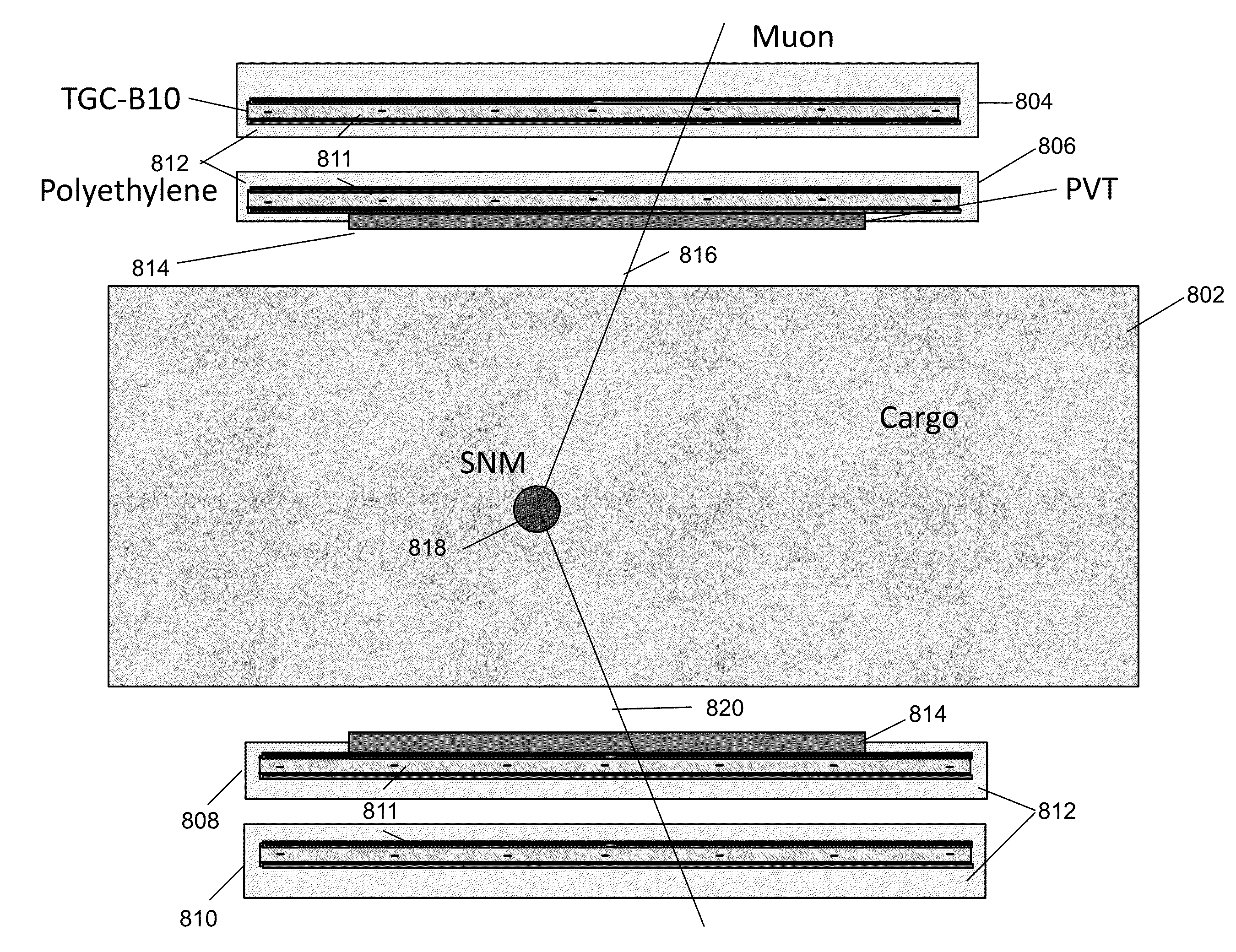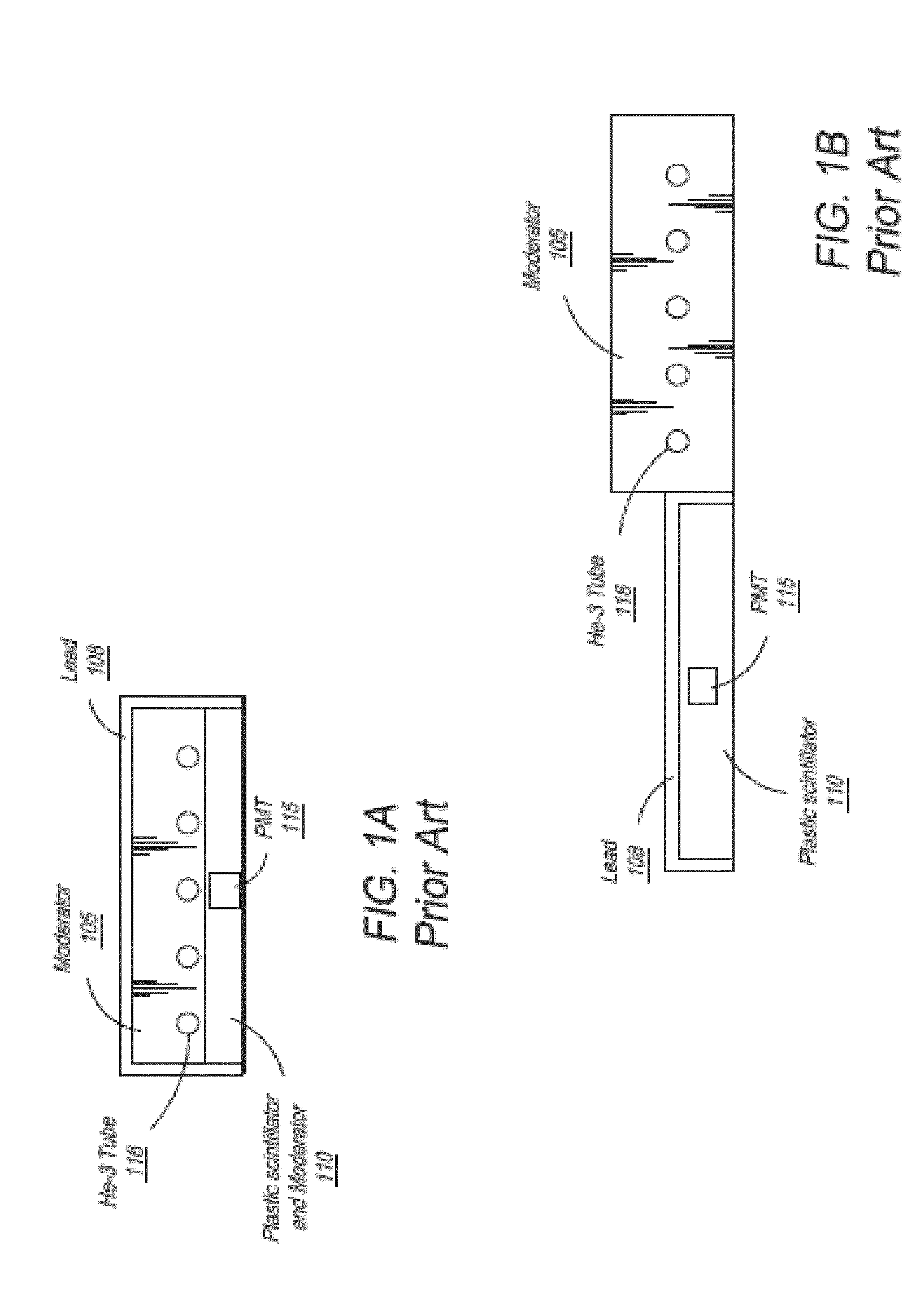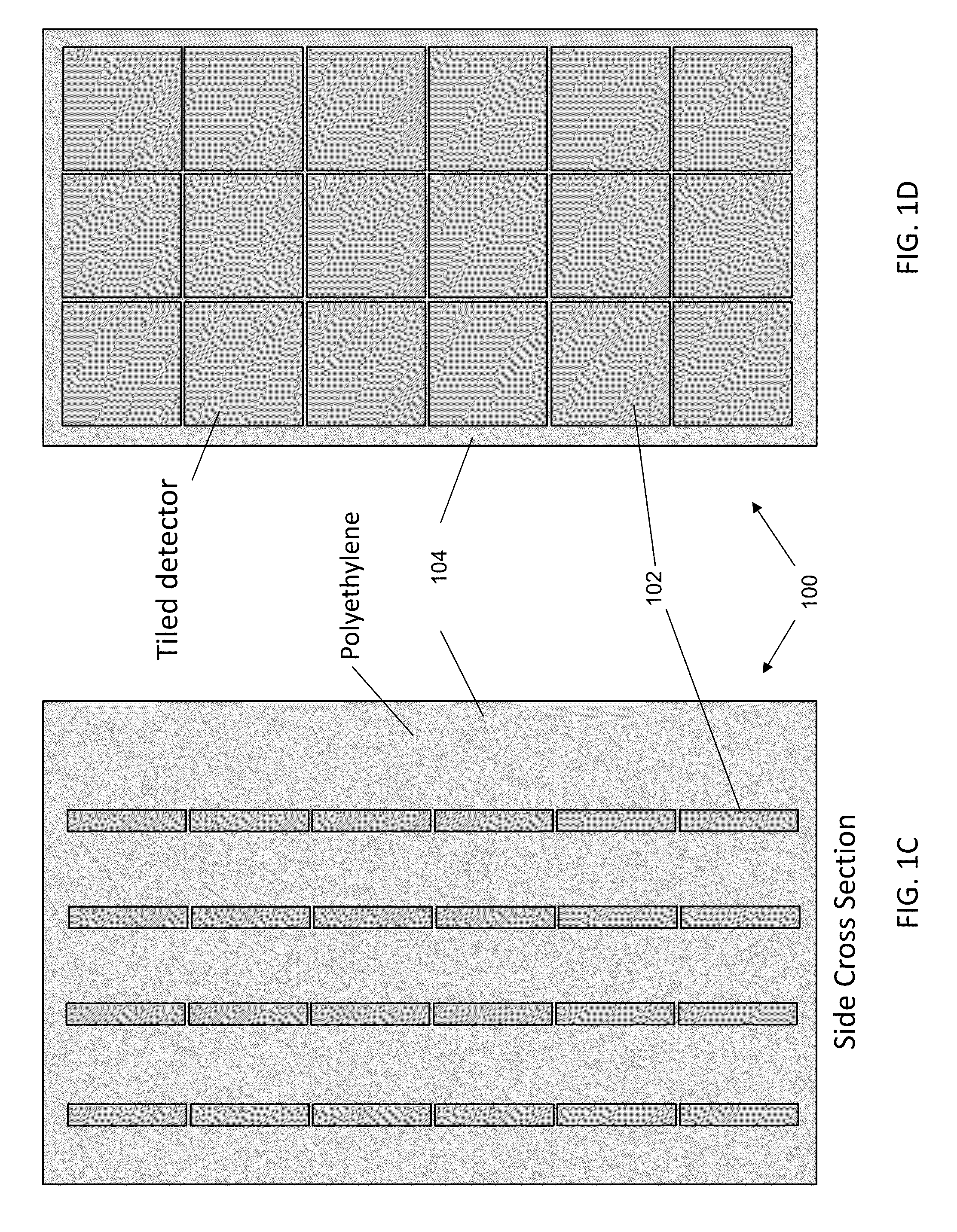Thin Gap Chamber Neutron Detectors
a neutron detector and gap chamber technology, applied in the field of radioactive material detection, can solve the problems of unambiguous detection method of delayed neutrons, uncertain availability and future supply of such detectors, and relatively scarce materials, and achieve the effect of increasing detection efficiency
- Summary
- Abstract
- Description
- Claims
- Application Information
AI Technical Summary
Benefits of technology
Problems solved by technology
Method used
Image
Examples
Embodiment Construction
[0055]The present specification is directed towards a neutron detection system which is efficient, cost effective and suitable for large area deployment.
[0056]Most commonly deployed neutron detectors use Helium-3 tubes. However, the limited availability of He-3 raises concerns about the future availability of these detectors. In an embodiment, the present specification discloses neutron detection systems which have faster response times for active interrogation applications and can be fabricated using readily available materials unlike the Helium-3 based neutron detectors.
[0057]In an embodiment, the present specification describes a neutron detector based on thin gap chamber technology. In an embodiment, the present specification describes a novel thin gap chamber comprising a layer of thermal neutron absorber material which functions as a cathode. In an embodiment, the thermal neutron absorber material absorbs the incident thermal neutrons and emits charged particles which interact...
PUM
 Login to View More
Login to View More Abstract
Description
Claims
Application Information
 Login to View More
Login to View More - R&D
- Intellectual Property
- Life Sciences
- Materials
- Tech Scout
- Unparalleled Data Quality
- Higher Quality Content
- 60% Fewer Hallucinations
Browse by: Latest US Patents, China's latest patents, Technical Efficacy Thesaurus, Application Domain, Technology Topic, Popular Technical Reports.
© 2025 PatSnap. All rights reserved.Legal|Privacy policy|Modern Slavery Act Transparency Statement|Sitemap|About US| Contact US: help@patsnap.com



